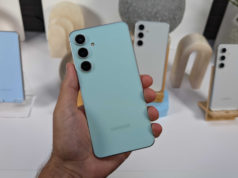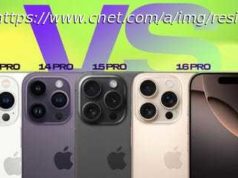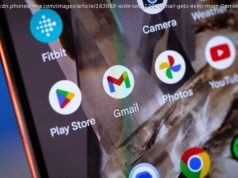The history of #Samsung and smartphones is long and storied. Come with us as we visit highlights from this technological giant’s trailblazing path.
In the modern mobile landscape, there are very few names that get to sit at the top of the mountain. While Apple may reign supreme in the United States with the iPhone lineup, Samsung commands a considerable presence both stateside and abroad. For far longer than Apple has, the South Korean tech giant has been making mobile devices. Moreover, their products are much more known for being on the edge of innovation, though not always for the best. The history of Samsung Mobile’s presence in the industry has many ups and downs, but undoubtedly many huge moments.
From being on the absolute cutting edge of smartwatch and smartphone technology to having some of the biggest controversies in the realm of smartphones, Samsung’s history is rich with key moments that were impactful for both the company and the wider industry. Amidst the long history of Samsung Mobile, some moments stand as the biggest moments in their history, for better or worse.1988: Samsung’s first mobile phone
Although Samsung may be much more well known now for the Galaxy lineup of smartphones, they made a lot of mobile phones before the rise of the smartphone. All the way back in 1988, Samsung released the SH-100, their first foray into the world of mobile phones. As the tech landscape was in the throes of transformation, this device marked Samsung’s entry into a realm that would come to define its future identity.
The Samsung SH-100 marked the beginning of Samsung’s long-running history of making cell phones, but it was also the beginning of cell phone manufacturing in South Korea. The SH-100 was the first cell phone ever made in South Korea. Prior to the release of the SH-100, Samsung had made the SC-1000. The SC-1000 was itself a cell phone; however, it wasn’t quite mobile. Rather, it was made for use in cars.
As a cellphone made in the 1980s, the SH-100 is bulky. It also has a large antenna. While the device itself is very clunky by the standards of phones today, the phone stands as a standard entry into the field that existed at the time. However, the SH-100 was hardly a hit. The success of phones today is generally measured by sales. The sales of most flagship phones today usually see figures in the millions. The Samsung SH-100 sold around a paltry 2000 units. Not exactly a smash hit, by any standard. Nevertheless, the phone was the first step to what would become a large part of Samsung’s future.2001: Samsung’s first smartphone
When you think of Samsung’s smartphone, it’s easy to immediately think of the Galaxy lineup. For a very long time in the American phone market, it was always a game of Apple, Samsung, and everybody else. However, the Galaxy isn’t all Samsung has ever made in the realm of smartphones.
While other outings like the Windows-based Samsung Focus exist, Samsung actually didn’t get into the smartphone game with Windows — or Android, for that matter. Long before the days of the iPhone, in 2001, the tech giant unveiled its first smartphone, the Samsung SPH-I300. The smartphone, powered by the Palm OS, was an early touchstone on the long road of smartphone history. At first glance, the SPH-I300 presented a familiar form factor, resembling other brick-shaped phones on the market. However, the integration of a touchscreen, a feature that was a little too ahead of its time, marked the device’s biggest point of difference.
Naturally, the touchscreen wasn’t great. It was 2001, after all. The most tellingly mediocre spec of the SPH-I300’s touchscreen is the fact that it is resistive rather than capacitive. Capacitive touch screens are what exist on almost every modern phone in use today. Resistive, on the other hand, is more akin to the touch screens found on retail POS systems.
While the SPH-I300 may seem rudimentary by today’s standards, its significance in 2001 cannot be overstated. However, as with any trailblazing technology, the SPH-I300 faced its share of challenges. The smartphone market was still in its infancy, and consumer expectations were evolving rapidly. Samsung’s venture into the smartphone realm was a testament to its willingness to try new things in the market.2009: Samsung begins using Android
In the year 2009, Samsung embraced the Android operating system, a pivotal decision that laid the foundation for its ongoing central role in the smartphone market. The Samsung Galaxy I7500 marked the beginning of both Samsung’s relationship with Android, and the Galaxy lineup of phones.
Samsung’s maiden voyage into the Android ecosystem provided users with a versatile and user-friendly experience. More importantly, it provided an alternative to the rapidly growing popularity of the iPhone. The device boasted a 3.2-inch AMOLED display, a technological marvel at the time, offering users a vibrant and immersive visual experience.
The integration of Android introduced users to a new era of app-centric functionality. The Google Play Store, then known as the Android Market, provided a gateway to a myriad of applications, transforming smartphones from communication tools into versatile pocket computers. The Galaxy I7500’s foray into Android marked the beginning of Samsung’s journey toward customization and optimization. Samsung’s TouchWiz UI, layered atop Android, introduced a level of personalization that would become a hallmark of its future devices.
While the Galaxy I7500 marked a significant shift in Samsung’s mobile strategy, it was also a learning curve. Early Android iterations had their quirks; later models would aim to refine the user experience. The Galaxy I7500 was a stepping stone, but a hugely important one within the history of Samsung’s mobile devices.2009: Samsung’s first smartwatch
In 2013, Samsung leaped into the realm of wearable technology with the introduction of the Samsung Galaxy Gear, marking the company’s first iteration of their ongoing lineup of smartwatches, which has since become known as the Galaxy Watch.






